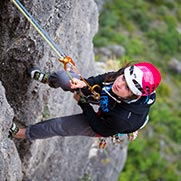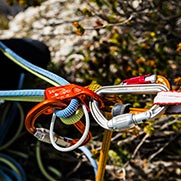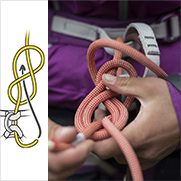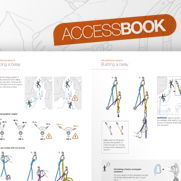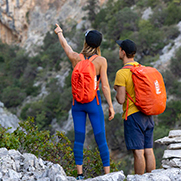Crevasse rescue no. 2: accessing the edge of the crevasse to evaluate the situation
Once the fall has been arrested and the victim's weight transferred to the anchor, it is necessary to access the edge of the crevasse to assess the victim's condition before starting the haul.
Warnings
- Carefully read the Instructions for Use used in this technical advice before consulting the advice itself. You must have already read and understood the information in the Instructions for Use to be able to understand this supplementary information.
- Mastering these techniques requires specific training. Work with a professional to confirm your ability to perform these techniques safely and independently before attempting them unsupervised.
- We provide examples of techniques related to your activity. There may be others that we do not describe here.
The person on the surface, the "rescuer", must always be anchored. If creating a second anchor is not possible, the rescuer can use the same anchor as the victim. The rescuer's movements must be done with the rope under tension to avoid a shock load in case of a fall, which could weaken the anchor.
Moving with an autoblock knot on the victim's rope
If the "rescuer side" of the rope is too short, it is possible to move with the autoblock on the taut rope supporting the victim. The rescuer must tie-in again as soon as possible after returning to the anchor.
Warning: in this case, if the rescuer falls, for example if the crevasse lip collapses, both climbers will be held by the same rope. The stresses on the system will be significant (anchor + progress capture pulley).
- The anchor could fail, causing both climbers to fall
- If the anchor holds, the rope could be damaged or cut by the MICRO TRAXION's cam, especially if the rope is thin (See test results at the end of this document)
Moving with an autoblock knot on the rescuer's rope
The autoblock allows the length of the rescuer's belay rope to be constantly adjusted, without needing to untie from the rope.


